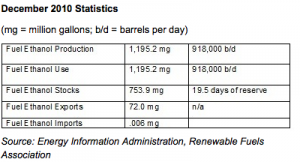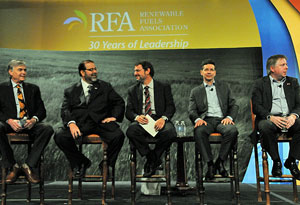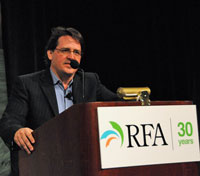 A Detroit-based biodiesel technology developer will commercially produce a new catalyst designed to help produce biodiesel more cheaply.
A Detroit-based biodiesel technology developer will commercially produce a new catalyst designed to help produce biodiesel more cheaply.
Biodiesel Magazine reports NextCAT Inc. will produce the catalyst developed at the National Biofuels Energy Laboratory at Wayne State University and integrate it into existing biodiesel plants:
According to NextCAT President Charles Salley, NextCAT intends to leverage $800,000 in total funding that came in the form of Michigan-supported pre-seed capital funds in recent months, including grants from the National Science Foundation, to bring its novel catalyst technology to market.
“We made the decision based on major funding milestones and by securing strategic partnerships over past several months,” Salley told Biodiesel Magazine.
NextCAT’s technology involves the use of a clean heterogeneous solid metal oxide catalyst capable of performing esterification and transesterification steps in a single pass without consuming the catalyst in the reaction, according to Salley.
“The thing that’s magic about the catalyst that we have licensed is that it’s duel-acting, meaning that it does transesterification and esterification steps simultaneously, which makes it particularly well-suited for moderate to high FFA feedstocks like yellow grease or residual corn oil from the ethanol production process,” Salley said. “Those feedstocks aren’t well-handled by first-generation homogenous catalysts as they tend to create soaps and other waste byproducts that can make the process challenging.”
NextCAT officials say they will be doing a pilot-scale test during this quarter.










 In the great tradition of saving the best for last, the
In the great tradition of saving the best for last, the  Moderator Bliss Baker with the
Moderator Bliss Baker with the